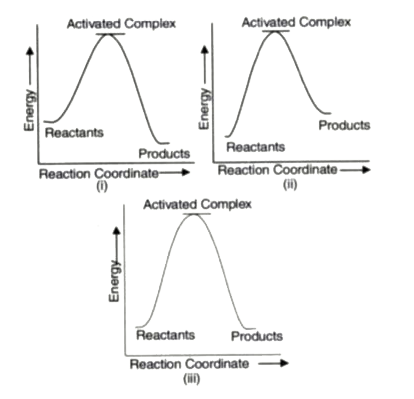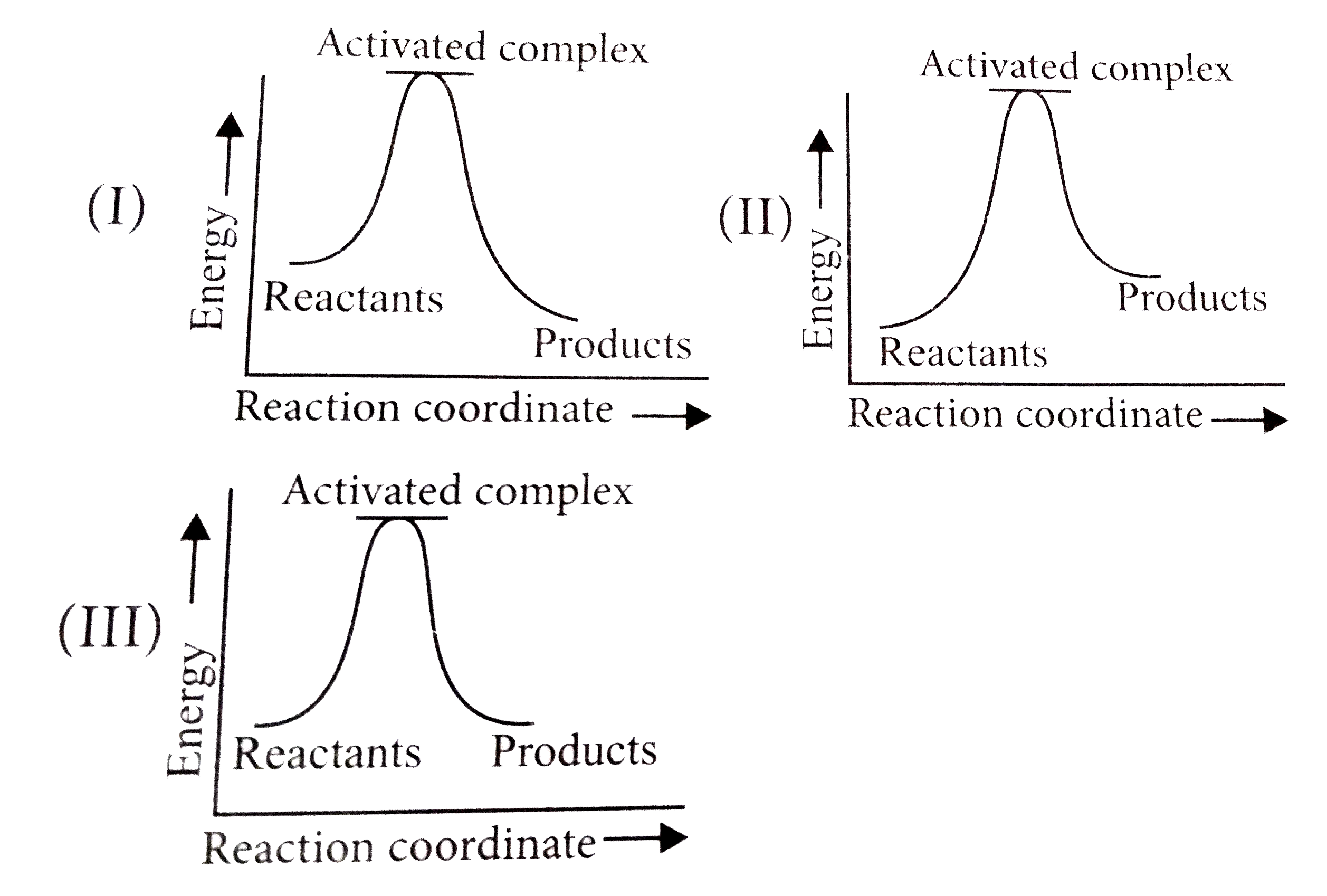Which of the following represents an exothermic reaction :-
N2(g)+O2(g)→2NO(g),ΔH=180.5KJ
H2O(g)+C(s)→CO(g)+H2(g),ΔE=131.2KJ
2HgO(s)+180.4KJ→2Hg(l)+O2(g)
2Zn(s)+O2(g)→2ZnO(s),ΔE=−693.8KJ
The correct Answer is:D
To determine which of the following represents an exothermic reaction, we need to understand the definitions of exothermic and endothermic reactions.
1. Understand Exothermic Reactions:
- An exothermic reaction is one that releases energy, usually in the form of heat. This can be represented by a negative change in enthalpy (ΔH < 0).
2. Understand Endothermic Reactions:
- An endothermic reaction absorbs energy from the surroundings, leading to a positive change in enthalpy (ΔH > 0).
3. Analyze the Given Reactions:
- For each reaction provided, we need to determine whether the change in enthalpy (ΔH) is positive or negative.
- If ΔH is negative, the reaction is exothermic; if ΔH is positive, the reaction is endothermic.
4. Evaluate Each Option:
- Option A: If ΔH is positive, this is an endothermic reaction.
- Option B: If ΔH is positive, this is also an endothermic reaction.
- Option C: If ΔH is positive, this is again an endothermic reaction.
- Option D: If ΔH is negative, this indicates that energy is released, making this an exothermic reaction.
5. Conclusion:
- The only option that represents an exothermic reaction is Option D, where energy is released during the formation of products.
Final Answer:
The correct answer is Option D.
- An exothermic reaction is one that releases energy, usually in the form of heat. This can be represented by a negative change in enthalpy (ΔH < 0).
- An endothermic reaction absorbs energy from the surroundings, leading to a positive change in enthalpy (ΔH > 0).
- For each reaction provided, we need to determine whether the change in enthalpy (ΔH) is positive or negative.
- If ΔH is negative, the reaction is exothermic; if ΔH is positive, the reaction is endothermic.
- Option A: If ΔH is positive, this is an endothermic reaction.
- Option B: If ΔH is positive, this is also an endothermic reaction.
- Option C: If ΔH is positive, this is again an endothermic reaction.
- Option D: If ΔH is negative, this indicates that energy is released, making this an exothermic reaction.
- The only option that represents an exothermic reaction is Option D, where energy is released during the formation of products.
The correct answer is Option D.
Topper's Solved these Questions
- THERMODYNAMICS BOOK - ALLENCHAPTER - THERMODYNAMICS EXERCISE - EXERCISE -4
18 Videos
- THERMODYNAMICS BOOK - ALLENCHAPTER - THERMODYNAMICS EXERCISE - EXERCISE -2
100 Videos
- TEST PAPERSBOOK - ALLENCHAPTER - TEST PAPERSEXERCISE - MATHEMATICS
2 Videos
- Thermodynamics And Thermo ChemistryBOOK - ALLENCHAPTER - Thermodynamics And Thermo ChemistryEXERCISE - All Questions
40 Videos
Similar Questions
Knowledge Check
Which of the following graphs represents exothermic reaction ?
 A(i) onlyB(ii) onlyC(iii) onlyD(i) and (ii)
A(i) onlyB(ii) onlyC(iii) onlyD(i) and (ii)Which of the following graphs represents exothermic reaction ?
 A(i) onlyB(ii) onlyC(iii) onlyD(i) and (ii)
A(i) onlyB(ii) onlyC(iii) onlyD(i) and (ii)Which of the following graphs represents exothermic reaction ?
 A(i) onlyB(ii) onlyC(iii) onlyD(i) and (ii)
A(i) onlyB(ii) onlyC(iii) onlyD(i) and (ii)
Which of the following graphs represents exothoermic reaction?

View SolutionWhich one of the following is an exothermic reaction?
View SolutionWhich plot represent an exothermic reaction ?
View SolutionWhich of the following represents a redox reaction?
View SolutionWhich of the following represents saponification reaction ?
View Solution

